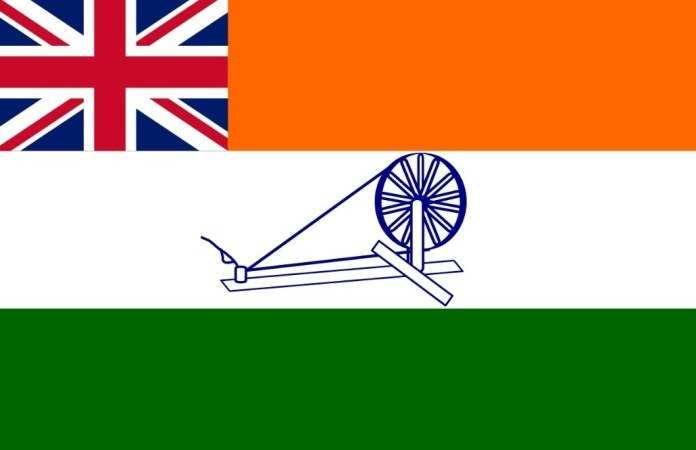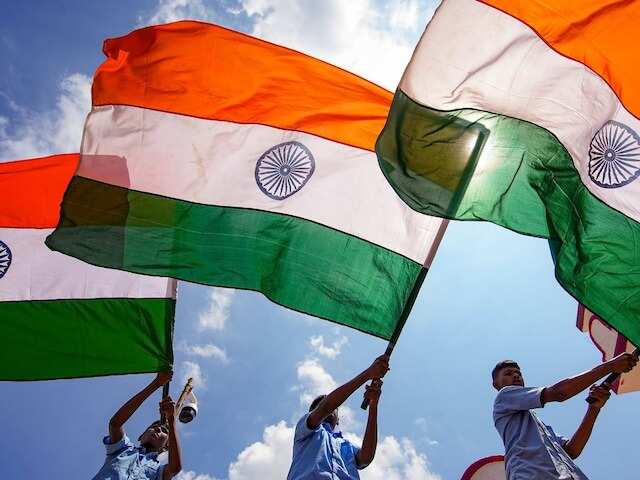The Evolution of India’s Flag: Mahatma Gandhi's Union Jack Proposal and Beyond
When Mahatma Gandhi said that "a flag is essential to all nations", he also emphasized why India should have its own. "It will be necessary for us Indians, Muslims, Christians, Jews, Parsis and all others for whom India is their home," he said. A flag not only represents a nation and its principles, it also binds people of different cultures, religions and backgrounds. This is reflected in the tricolor of India, which has evolved since its inception.

When Mahatma Gandhi said that "a flag is essential to all nations", he also emphasized why India should have its own. "It will be necessary for us Indians, Muslims, Christians, Jews, Parsis and all others for whom India is their home," he said. A flag not only represents a nation and its principles, it also binds people of different cultures, religions and backgrounds. This is reflected in the tricolor of India, which has evolved since its inception.

India's first flag
The national flag was first adopted during the Constituent Assembly held on July 22, 1947. This was a few days before the declaration of India's independence from the British.
But it was reported that Swami Vivekananda's Irish disciple Sister Nivedita designed the flag between 1904 and 1906. The flag was red and yellow with the image of 'Vajra' (Indra's weapon). The phrase 'Vande Mataram' was written on it in Bengali. The color red and yellow represent freedom and victory while the Vajra symbol symbolizes power. On August 7, 1906, the national flag was hoisted for the first time at the Parsi Bagan in Kolkata, now known as the famous Girish Park. The tricolor consists of three equal stripes of green (top), yellow (middle) and red at the bottom. The green panel had 8 lotus flowers, half open and the yellow part had the words Vande Mataram in Devanagiri script.
Another flag
The second national flag was designed by Madam Bhikaji Cama, Veer Savarkar and Shyamji Krishna Varma, popularly known as the 'Kama flag', which was displayed at a socialist conference in Berlin, Germany. This flag was similar to the previous flag but the top bar had only a lotus and seven stars signifying 'Saptarshi' and the upper panel featured saffron while green occupied the lower bar. It also had the words 'Vande Mataram'.
This was the first time that India's flag was being hoisted internationally, known as the Berlin Committee Flag.
Home Rule Movement During 1917, Annie Besant and Lokmanya Tilak were key figures in the national struggle. The flag had five red and four green horizontal stripes arranged alternately, and retained the depiction of the Saptarishi with seven stars on it. In the upper left corner, towards the pole was the symbol of the Union Jack. It also had a white crescent and star in front of it in the right corner.

The final version of the flag
The present day flag was designed by freedom fighter Pingali Venkaiah, also known as Japan Venkaiah. The idea of the tricolor reportedly came to Venkaiah when he met Mahatma Gandhi in South Africa during the Second Anglo-Boer War (1899–1902), where he was stationed as part of the British Army. At the All India Congress Committee in Bezwada in 1921, Venkaiah again met Gandhi and proposed a basic design for a flag with two red and green bands symbolizing the two main communities, Hindus and Muslims. Gandhi, however, suggested adding a white stripe to represent peace and the rest of the communities living in India, and a spinning wheel to symbolize the country's progress.
How the present day tricolor was chosen
In 1931, the national flag replaced red with saffron at the top, while the white and green stripes were retained on the center and bottom panels respectively. Gandhiji's Charkha symbol was placed in the center of the flag.
Saffron represented strength, white stood for truth and the bottom represented fertility. A resolution was passed in the Congress Committee to make this the official flag of India. This was also the battle insignia of the Indian National Army. Finally, on July 22, 1947, when the members of the Constituent Assembly met at the Constitution Hall in Delhi, the first item on the agenda was reportedly Pandit Jawaharlal Nehru's proposal to adopt a national flag for free India.
It was proposed that the national flag would be a horizontal tricolor of equal proportions of deep saffron (saffron), white and dark green. The white band should have a wheel in navy blue (replaced by a wheel), which appears on the abacus of Ashoka's Sarnath Singh capital. Mahatma Gandhi, however, was not happy with the flag, and in one of his letters published in 'The Collected Works of Mahatma Gandhi', he expressed that he was unhappy with the design for two reasons, the absence of the Union Jack, and the Ashoka Chakra replacing the charkha (spinning wheel). replacing with
Controversy over the Union Jack symbol
Mahatma Gandhi in one of his letters endorsed the flag proposed by the last British Viceroy of India, Lord Mountbatten. The design incorporated the Congressional flag but the canton contained the Union Jack. However, this was rejected by Nehru, who claimed that nationalist members of Congress would see the inclusion of the Union Jack as overly deferential to the British.
